Achieving a flawless watercolor or mixed media painting is an art form, but preventing paper from curling can be a common hurdle.
The phenomenon of paper curling is often a result of water absorption, leading to warping and compromising the artwork’s quality.
In this guide, we’ll explore essential techniques to ensure a flat canvas, from choosing the right paper and stretching methods to controlling water usage and employing strategic drying techniques.
By understanding and implementing these preventive measures, artists can enhance their creative process, allowing their artistic vision to unfold seamlessly on a beautifully preserved, unwrinkled canvas.
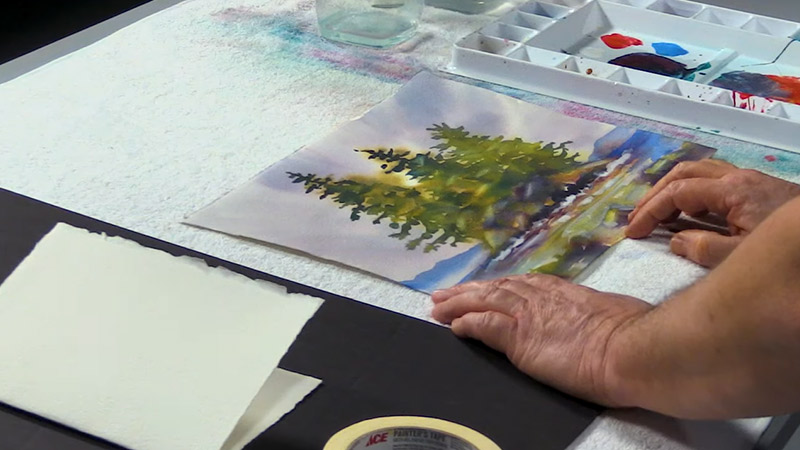
How Do You Stop Paper from Curling When Painting?
Preventing paper from curling when painting is crucial to ensure a smooth and enjoyable art process.
Here are some tips on how to keep paper from curling when painting to help you prevent paper curling:
Choose the Right Paper
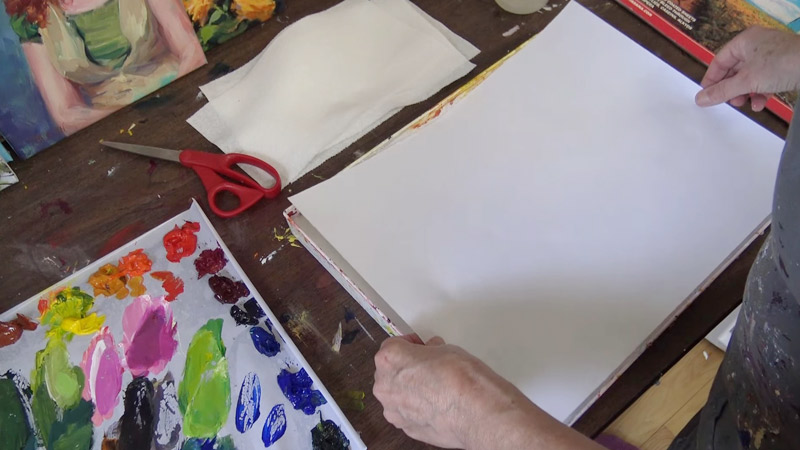
Investing in high-quality watercolor paper is crucial for preventing curling when painting. Papers explicitly designed for wet media, labeled as “watercolor paper” or “mixed media paper,” are generally more resilient to water and less prone to curling.
Opt for heavier-weight papers, such as 140lb (300) or higher, as they tend to resist warping better, providing a stable surface for your artwork.
Stretch Your Paper
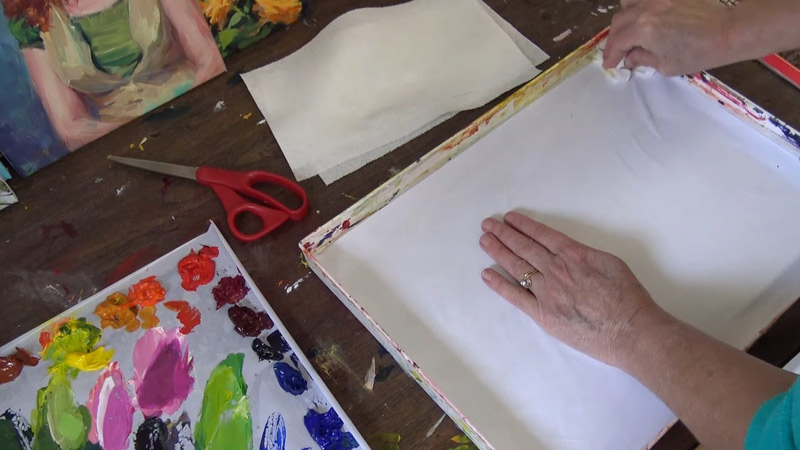
Stretching paper is an effective technique to minimize curling. Begin by wetting the paper thoroughly, allowing it to absorb water evenly.
Tape the wet paper to a flat and rigid surface using painter’s tape, ensuring it stays taut as it dries.
This process allows the paper to tighten and adhere to the surface, reducing the likelihood of curling during and after the painting process.
Tape Down Edges
Tapping down the edges is a viable alternative for those who prefer not to stretch the entire sheet of paper.
Secure the edges with painter’s tape to a board or another flat surface. This method ensures that there is no room for the edges to curl up as they dry, maintaining the paper’s flatness.
Use the Masking Tape Technique
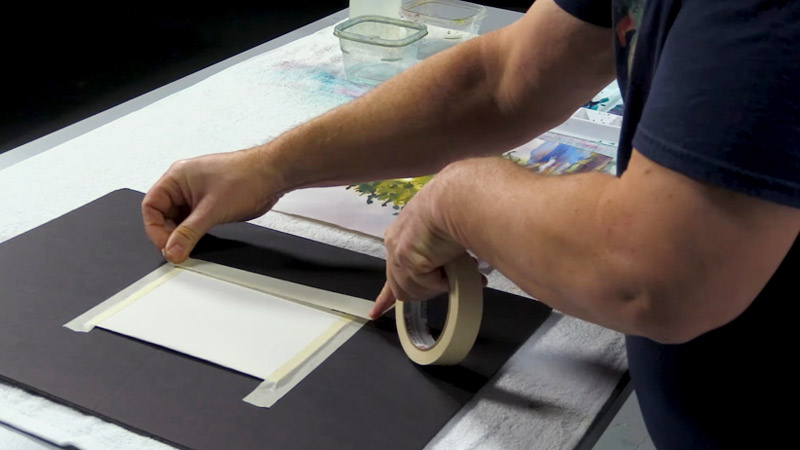
Applying masking tape to the edges of the paper before painting serves as a preventive barrier.
This technique helps restrict excessive moisture absorption by the edges, minimizing the risk of curling. When the painting is complete, carefully remove the tape to reveal clean and crisp edges.
Work in Layers
Working in layers is a fundamental approach to prevent paper curling. Rather than applying a heavy wash of water or paint all at once, allow each layer to dry before adding the next.
This gradual process minimizes the amount of water the paper absorbs, reducing the stress on the fibers and decreasing the likelihood of curling.
Use a Drawing Board
Always place your paper on a flat, sturdy drawing board when working on your art. This provides crucial additional support and helps distribute water evenly across the paper.
The stability of the drawing board reduces the chances of uneven drying and curling, allowing for a more controlled painting experience.
Avoid Excessive Water
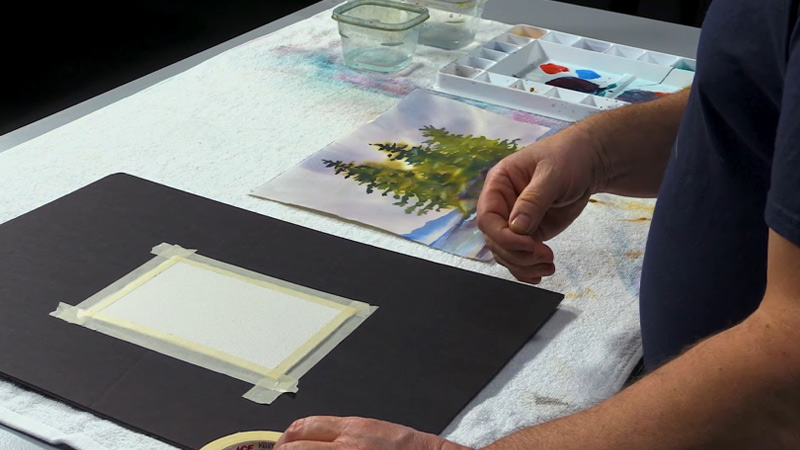
Mindful water usage is key to preventing paper curling. Be cautious not to use excessive water in your painting process, as this can saturate the paper and lead to unwanted warping.
If you find you’ve applied too much water, gently blot the excess with a clean, dry brush or paper towel. This simple step helps maintain the paper’s integrity and minimizes the risk of curling.
Dry Evenly
Consider using a hairdryer in a low, cool setting when expediting the drying process. Ensure that the entire paper dries evenly by moving the hairdryer across the surface.
Even drying is essential in preventing warping and maintaining the flatness of the paper, contributing to a more polished final result.
Store Flat
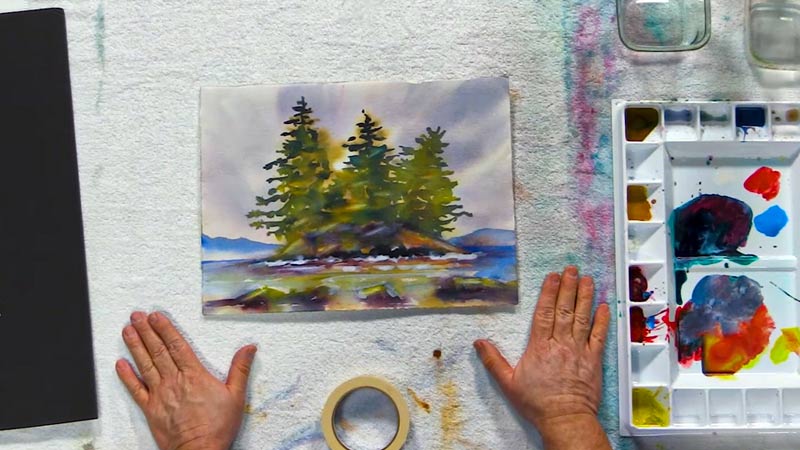
Once your artwork is complete, store it flat or between sheets of heavyweight paper. Storing paintings in a flat position helps maintain their flatness over time. Avoid stacking wet or damp paintings, as this can contribute to curling.
If you need to transport your artwork, consider using a portfolio or a protective covering to prevent damage and maintain the paper’s integrity.
Why Does Paper Curl When Painting?
Paper curls when painting due to the absorption of water or moisture, uneven drying, and the expansion and contraction of paper fibers.
Understanding the factors that contribute to paper curling can help artists take preventative measures to minimize or eliminate this issue:
Absorption of Water
Paper is inherently absorbent, making it prone to soaking up moisture, especially when water-based paints are applied.
The degree of absorption depends on the paper’s composition, with some papers having more sizing (a substance applied to control absorbency) than others.
The paper fibers swell unevenly as water is absorbed, causing the paper to warp or curl. This effect is more pronounced when the paper is saturated with water during painting.
Uneven Distribution of Moisture
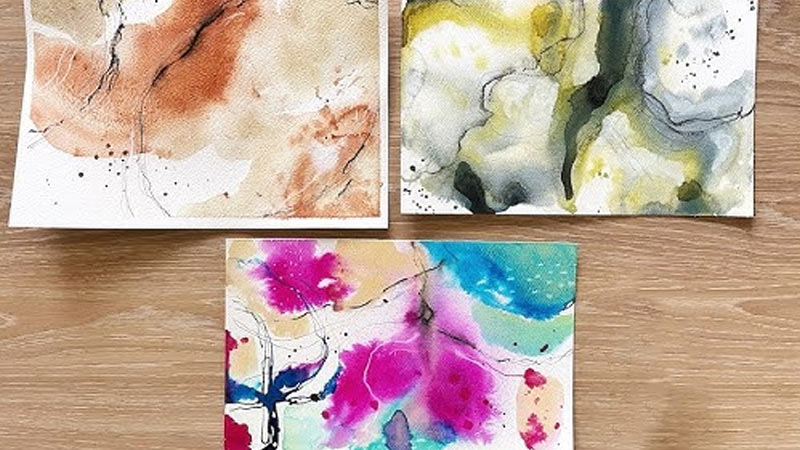
Applying water or paint unevenly across the paper surface can lead to localized variations in moisture content.
When certain areas receive more moisture than others, the paper swells unevenly, resulting in higher tension and curling areas.
Artists should aim for a balanced application of water or paint to maintain uniform moisture levels and minimize the risk of curling.
Fiber Expansion and Contraction
Paper fibers are composed of cellulose, and when they absorb moisture, they expand. As the paper dries, the fibers contract.
This constant expansion and contraction can create internal stresses within the paper, contributing to warping.
The uneven distribution of moisture and drying rates across the paper surface further exacerbates this effect.
Insufficient Paper Weight
The weight of the paper is a critical factor in its ability to resist warping. Lighter weight papers, such as those below 140lb (300gsm), lack the structural stability to withstand the stresses induced by water absorption and drying.
Choosing heavyweight papers provides more substance and stability, reducing the likelihood of curling during and after the painting process.
Paper Quality and Sizing
The paper’s quality and sizing presence significantly influence its resistance to warping.
Papers specifically designed for wet media, like watercolor paper, are often treated with sizing to control absorbency.
Sizing helps the paper maintain its shape and prevents excessive swelling. High-quality papers with appropriate sizing are less prone to distortion.
Lack of Preparation Techniques
Preparation techniques play a crucial role in preventing paper curling. Stretching the paper before painting is a proactive method that involves wetting it and securing it to a flat surface, allowing it to dry under tension.
Taping down the edges with painter’s tape is another technique that provides additional support, minimizing the potential for the edges to curl.
Humidity and Environmental Conditions
The surrounding environment can impact the behavior of paper. In high-humidity conditions, paper absorbs moisture from the air, leading to increased water content and a higher risk of curling.
Conversely, rapid drying may occur in low-humidity environments, causing uneven contraction and potential warping.
Maintaining a controlled painting environment helps mitigate these environmental factors.
How to Flatten Acrylic Painting on Paper?
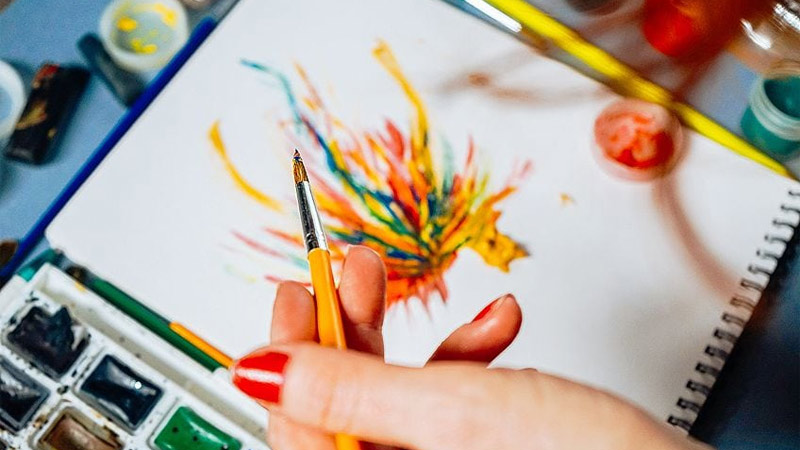
Flattening an acrylic painting on paper is crucial to ensure the artwork remains smooth and free from unwanted warping or curling.
Here’s a step-by-step guide on how to flatten acrylic paintings on paper:
Allow Sufficient Drying Time
Patience is crucial when working with acrylic paintings on paper. Allow the paint to dry completely before attempting any flattening techniques.
While acrylics generally dry quickly, thicker layers or high humidity levels can prolong drying. Waiting for at least 24 hours ensures that the paint has fully cured.
Place Under Heavy Weight
Choose a clean, flat surface and lay the acrylic painting face down. To protect the artwork, place a clean, smooth, and non-stick material such as wax paper or silicone release paper over it.
Distribute a heavyweight evenly on top, using books or flat boards. This method encourages the paper to flatten as it adjusts to the pressure.
Use a Clean, Damp Cloth
For minor warping, lightly dampen a clean, lint-free cloth with water. Gently moisten the back of the painting, taking care not to oversaturate.
Lay the artwork face down on a flat surface and cover it with a clean, non-stick material. Apply a weighted object to encourage the paper to settle back into place.
Back and Forth Technique
When dealing with more stubborn warping, employ the back-and-forth technique. Dampen the back of the painting with a clean, damp cloth, and then use a hairdryer on a low, cool setting to gently warm the paper.
While the paper is still slightly damp, place it under a heavy weight. The combination of moisture and heat aids in reshaping the paper fibers.
Stretch and Tape Technique
Addressing significant warping may require the stretching and taping technique. Thoroughly wet the back of the paper and tape it to a flat, rigid surface using painter’s tape.
As the paper dries, it tightens and adheres to the surface, minimizing warping. While more involved, this method is effective for correcting substantial distortions.
Humidity Control
Consider the environmental conditions in your workspace, especially humidity levels. Extreme humidity can impact the paper fibers and contribute to warping.
Using a dehumidifier or working in a controlled environment helps maintain optimal conditions for your artwork, preventing future warping issues.
Matting and Framing
Once the acrylic painting is successfully flattened, consider matting and framing it. Matting provides additional support and prevents the artwork from directly contacting the glass.
This enhances the visual presentation and reduces the risk of future warping. Choose acid-free matting and framing materials for archival preservation.
FAQs
How can I choose the right paper to prevent curling?
Select high-quality watercolor or mixed media paper labeled as heavyweight, typically 140lb (300gsm) or higher. These papers are designed to resist warping when exposed to moisture.
Is stretching paper necessary to prevent curling?
Stretching paper is an effective preventive measure. Wetting the paper and taping it down onto a flat, rigid surface helps it tighten and adhere, minimizing the likelihood of curling.
Can I use masking tape to prevent paper curling?
Yes, applying masking tape or painter’s tape along the edges of the paper creates a barrier, preventing excessive moisture absorption and reducing the risk of curling.
To Recap
Mastering the art of preventing paper curling while painting is pivotal for artists seeking a seamless and professional finish to their works.
By meticulously selecting the right paper, employing stretching and taping techniques, and controlling water usage, artists can mitigate the challenges posed by curling.
Additionally, strategic drying methods, a flat and well-supported painting surface, and careful storage contribute to the longevity and visual appeal of the artwork.
As creators implement these preventive measures, they empower themselves to focus on their artistic expression, confident that their chosen canvas will remain flat, preserving the integrity of their creative endeavors for years to come.
Leave a Reply